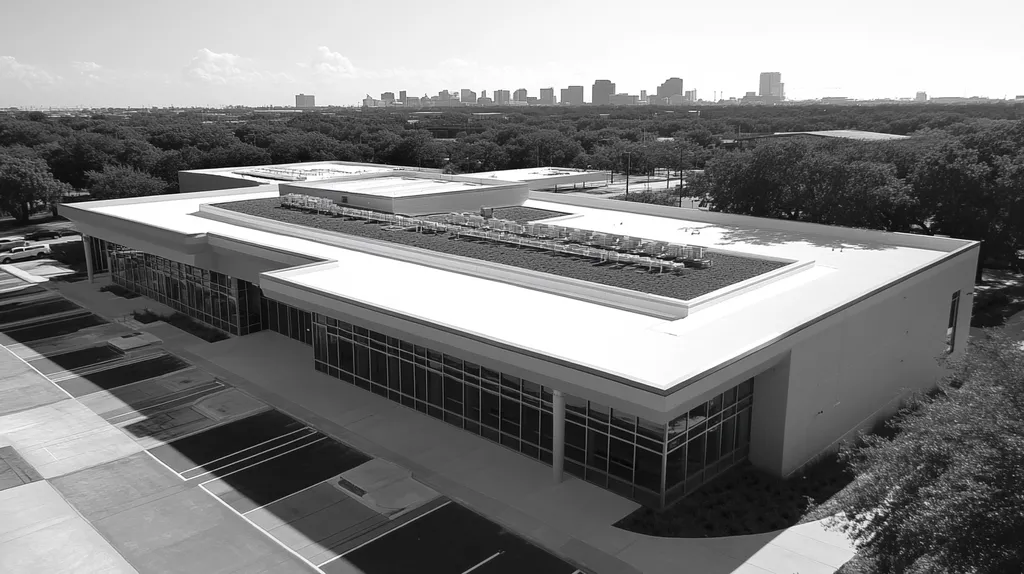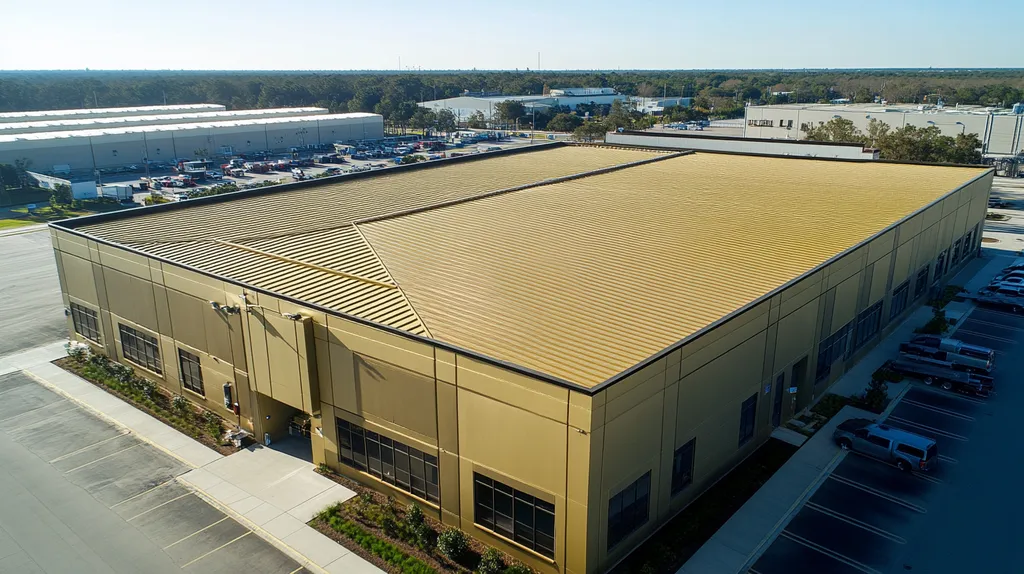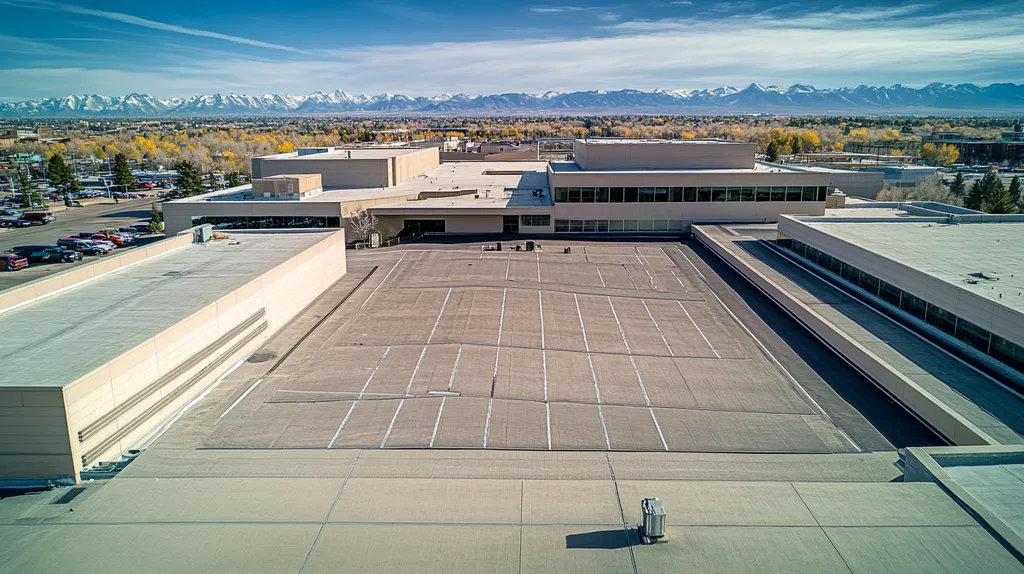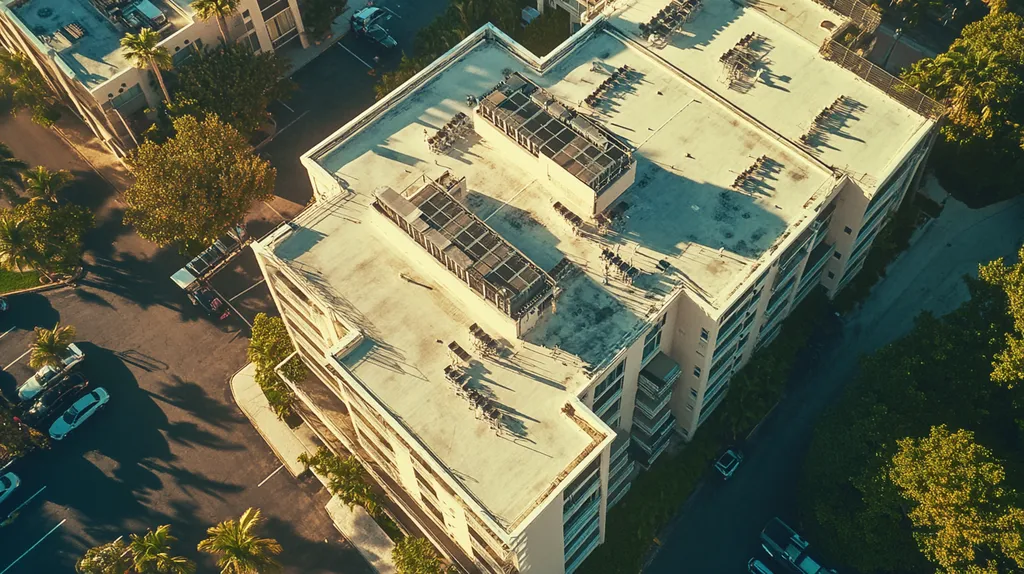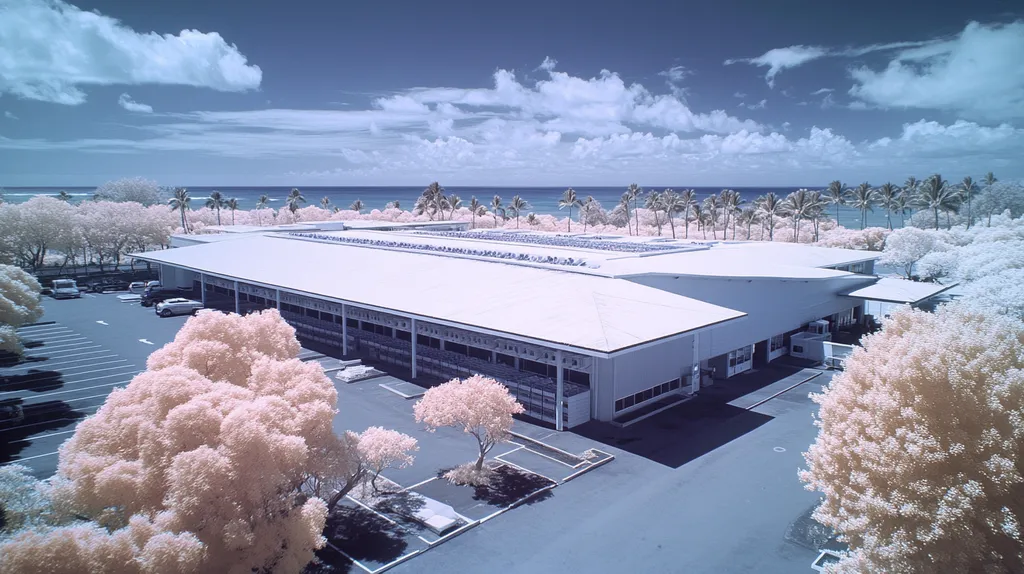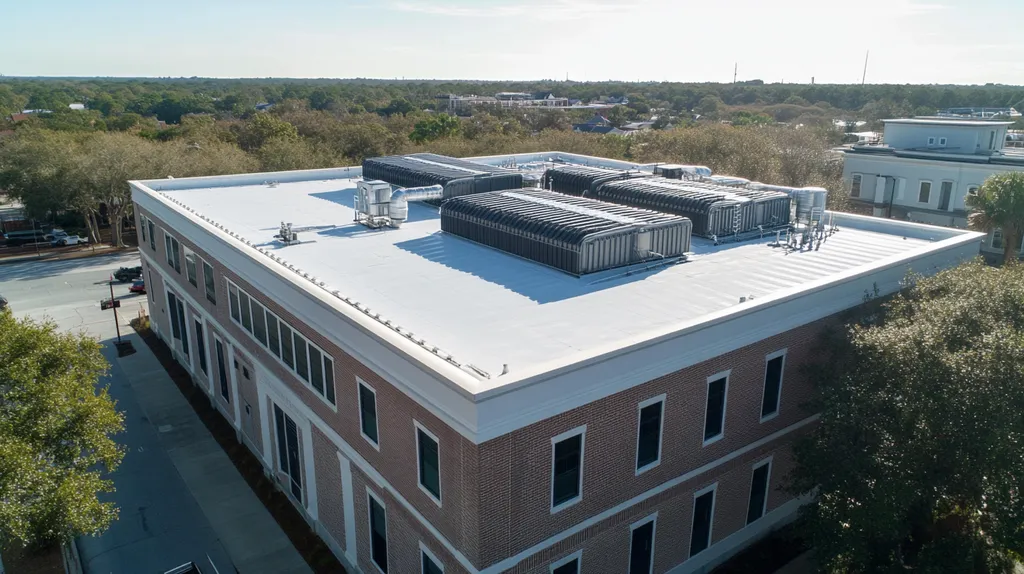Welcome to today’s Battle Royale featuring two roofing heavyweights: “TPO” in the east corner versus “PVC” in the west!
Tonight’s showdown pits these contenders against each other across six punishing rounds designed to test every aspect of their performance for Commercial Roof Design Influence on Fire Spread.
At stake? Millions in potential costs, decades of building protection, and the critical performance demands of modern commercial and industrial facilities.
Our professional judging panel will evaluate each round on technical merit, real-world performance, and value delivery. After all six rounds, we’ll declare our ultimate champion.
Ladies and gentlemen, facility managers and building owners… it’s time to rumble!
ROUND 1: INITIAL COSTS & INSTALLATION
In an era where building fires can rapidly spread through urban-wildland interfaces, initial roofing decisions carry more weight than ever. The choice between TPO and PVC roofing systems extends beyond simple cost comparisons – it’s about creating resilient buildings that can withstand modern fire challenges.
With increasing fire risks in commercial and industrial zones, especially those near natural areas, roofing material selection has become a critical first line of defense against fire spread.
Material Expenses
The human interface between commercial buildings and surrounding vegetation creates unique fire risks that must factor into material selection. TPO membranes typically cost 30% less than PVC alternatives, making them initially attractive for budget-conscious projects.
PVC’s higher price point reflects its enhanced chemical formulation and superior fire-resistant properties. The material’s inherent flame resistance comes from its chlorine content, which acts as a natural fire retardant.
Where buildings interface with natural areas, the additional cost of PVC can be justified by its superior fire performance. The rush to build commercial properties in vegetated areas has created environments where fire risks are significantly high. (source: NAPA Academy)
While TPO holds the advantage in initial cost, PVC’s fire-resistant properties may prove invaluable in high-risk areas.
Installation Complexity
Installation complexity directly impacts both immediate costs and long-term performance. TPO installations require less specialized training and fewer specific tools, resulting in lower labor costs and wider contractor availability.
PVC installation demands more expertise, particularly in heat-welding techniques. This specialized knowledge ensures proper seam fusion but increases installation time and labor costs.
The complexity difference affects more than just installation speed – it influences the reliability of fire-resistant properties. PVC’s more rigorous installation process helps ensure consistent performance during fire events.
TPO claims the advantage in installation simplicity, though PVC’s more demanding process contributes to its superior fire protection.
Project Timeline
Project duration significantly impacts business operations and exposure to weather risks during installation. TPO installations typically complete 25-30% faster than PVC projects due to simpler welding requirements and less demanding surface preparation.
PVC installations require more time for proper heat welding and seam inspection. This extended timeline can increase project costs through longer labor requirements and extended facility disruption.
However, the additional installation time for PVC helps ensure proper seam fusion and overlap, critical factors in preventing fire spread between roof sections.
TPO takes the clear advantage in timeline efficiency, though PVC’s longer installation process contributes to its superior fire protection characteristics.
ROUND 1 WINNER: TPO
ROUND 2: DURABILITY & LIFESPAN
When flames test a commercial roof’s integrity, durability and lifespan become life-or-death considerations. Modern fire risks demand roofing systems that maintain their protective qualities throughout their service life, not just on installation day.
The growing frequency of urban-interface fires means roofing materials must retain their fire-resistant properties despite years of weathering, UV exposure, and physical stress.
Material Composition and Resistance
TPO membranes rely on surface treatments and additives for their fire resistance, which can degrade over time. Their basic composition offers good flexibility but lacks inherent flame-retardant properties.
PVC’s molecular structure includes chlorine atoms that provide natural fire resistance that remains stable throughout the material’s lifetime. This composition creates superior resistance to fire spread while maintaining excellent durability against environmental stressors.
The Standard Test Methods for Fire Tests of Roof Coverings demonstrate PVC’s superior performance in spread-of-flame tests, with maximum flame spread consistently under six feet even after accelerated aging. (source: Sika USA)
For this subsection, PVC claims a clear ADVANTAGE over TPO.
Lifespan Expectations
TPO roofs typically last 15-20 years under optimal conditions. However, their fire-resistant properties can deteriorate faster, especially in areas with high UV exposure or frequent temperature extremes.
PVC roofing systems consistently demonstrate 25-30 year lifespans while maintaining their fire-resistant characteristics. Their chemical stability ensures consistent performance throughout their service life.
The longer effective lifespan of PVC translates to extended fire protection and fewer replacement cycles. This durability advantage becomes particularly critical in wildfire-prone regions.
PVC takes another clear ADVANTAGE in this category.
Maintenance and Repair Needs
TPO membranes require regular inspections to verify their fire-resistant properties remain intact. Age-related degradation can compromise their protective capabilities, demanding more frequent maintenance interventions.
PVC systems maintain their fire resistance with minimal maintenance requirements. Their chemical stability reduces the need for fire-resistance restoration treatments or protective coatings.
When repairs become necessary, PVC’s heat-welded seams can be restored to their original fire-resistant condition more reliably than TPO alternatives. This maintenance advantage helps ensure consistent fire protection throughout the roof’s lifespan.
PVC secures another clear ADVANTAGE in maintenance considerations.
ROUND 2 WINNER: PVC
ROUND 3: PERFORMANCE FACTORS
When fire strikes a commercial building, every second counts and every material choice matters. Recent studies show that proper roofing materials can extend evacuation time by up to 30 minutes – a critical window for saving lives and protecting assets.
With the increasing density of commercial developments and rising fire risks, understanding how roofing materials influence fire spread has never been more crucial. Commercial roof assemblies must incorporate robust safeguards against fire spread to prevent catastrophic losses. (source: RoofSource)
Fire Resistance Classifications
Fire resistance classifications directly impact building safety and insurance costs. TPO membranes typically achieve Class A ratings through surface treatments and additives, but their performance can degrade over time.
PVC’s inherent chlorine content provides natural fire resistance that maintains its classification throughout its lifespan. This chemical composition creates a self-extinguishing characteristic that actively fights flame spread.
The stability and reliability of PVC’s fire resistance gives it a clear ADVANTAGE in this category.
Thermal Performance
During fire events, roof surface temperatures can exceed 1,500°F. TPO membranes begin to soften at lower temperatures, potentially compromising their fire-resistant properties when they’re needed most.
PVC maintains its structural integrity at higher temperatures, creating a more reliable barrier against fire spread. Its superior thermal stability helps prevent roof collapse and contain fires to their point of origin.
In thermal performance considerations, PVC demonstrates another clear ADVANTAGE.
System Integration
TPO systems rely heavily on proper integration with other building components to maintain fire resistance. Penetrations, flashings, and edges require careful detailing to prevent weak points in fire protection.
PVC offers more forgiving installation tolerances while maintaining consistent fire performance across system components. Its heat-welded seams create monolithic protection that better resists flame spread.
When evaluating system integration, PVC claims another ADVANTAGE.
ROUND 3 WINNER: PVC
ROUND 4: MAINTENANCE REQUIREMENTS
In an era of increasing fire risks, proper roof maintenance isn’t just about preventing leaks – it’s about preserving critical fire safety features. Recent urban-interface fires have demonstrated how rapidly flames can spread across poorly maintained roofing systems, turning minor maintenance oversights into major catastrophes.
The choice between TPO and PVC carries significant implications for long-term maintenance demands and fire safety preservation. Understanding these requirements is crucial for protecting both property and lives.
Regular Inspection Requirements
TPO membranes require quarterly inspections to verify their fire-resistant properties remain intact. These inspections must focus particularly on seams and penetrations, where fire barriers are most vulnerable to compromise.
Surface degradation can occur rapidly in areas exposed to high UV or chemical pollutants, demanding vigilant monitoring. The membrane’s fire-resistant properties can deteriorate if maintenance isn’t properly scheduled and executed.
PVC systems maintain their fire resistance with less frequent inspection requirements. Their inherent chemical stability means fewer concerns about degradation of fire-resistant properties over time.
For inspection requirements, PVC claims a clear ADVANTAGE.
Repair Procedures
TPO repairs must be executed promptly to prevent compromise of the system’s fire resistance. The membrane’s repair process requires careful attention to maintain fire-resistant properties, particularly around seams and patches.
The material’s susceptibility to heat aging means repairs become more challenging as the roof ages. Each repair must be thoroughly tested to ensure fire resistance hasn’t been compromised.
PVC repairs can be completed more reliably, with heat-welded seams maintaining their original fire-resistant properties. The material’s stable chemical composition ensures consistent performance even after multiple repairs.
PVC demonstrates another clear ADVANTAGE in repair considerations.
Long-term Maintenance Costs
TPO systems often require increasing maintenance attention as they age, particularly in maintaining their fire-resistant properties. The need for more frequent inspections and repairs can drive up long-term maintenance costs.
Surface treatments may need renewal to maintain fire resistance, adding to the maintenance burden. These ongoing requirements can significantly impact facility maintenance budgets.
PVC’s inherent fire resistance and chemical stability translate to lower long-term maintenance costs. The reduced need for fire-resistance restoration or protective treatments provides substantial savings over time.
PVC secures another clear ADVANTAGE in maintenance costs.
ROUND 4 WINNER: PVC
ROUND 5: SUSTAINABILITY CREDENTIALS
As fire risks increase in commercial zones, sustainable roofing choices now intersect with critical safety considerations. Modern building codes and insurance requirements demand roofing systems that balance environmental responsibility with enhanced fire protection capabilities.
The sustainability profiles of TPO and PVC membranes reveal crucial differences in their ability to deliver long-term fire safety while minimizing environmental impact. These distinctions become especially important as urban development pushes further into fire-prone areas.
Environmental Impact
TPO manufacturing generates fewer toxic byproducts compared to PVC production, making it initially more environmentally friendly. However, TPO’s shorter lifespan means more frequent replacement cycles, creating additional waste and environmental impact over time.
PVC production processes raise environmental concerns due to chlorine content, yet this same chemical component provides superior fire resistance without additional treatments. The material’s longer service life reduces replacement frequency and associated environmental impacts.
PVC’s extended lifespan and reduced need for fire-resistant treatments give it the ADVANTAGE in total environmental impact.
Energy Efficiency
TPO membranes offer excellent solar reflectivity when new, helping reduce cooling costs and urban heat island effects. However, this reflectivity can degrade over time, particularly in areas with high fire risk where surface contamination is common.
PVC maintains consistent reflectivity and thermal performance even after extended exposure to harsh conditions. Its stable chemical composition helps preserve energy-efficient properties while maintaining fire resistance.
In energy efficiency considerations, PVC claims the ADVANTAGE through superior long-term performance.
Resource Conservation
TPO systems require more frequent replacement of fire-resistant additives and surface treatments, consuming additional resources over time. Their shorter service life also increases overall material consumption through more frequent complete replacements.
PVC’s inherent fire resistance eliminates the need for additional protective treatments throughout its lifespan. The material’s durability and chemical stability reduce resource consumption through fewer replacements and repairs.
For resource conservation, PVC demonstrates another clear ADVANTAGE.
ROUND 5 WINNER: PVC
ROUND 6: SPECIALIZED APPLICATIONS
Fire safety requirements become exponentially more complex in facilities handling hazardous materials or mission-critical operations. The wrong roofing choice in these specialized environments can transform a minor incident into a catastrophic event, threatening both lives and assets worth millions.
Commercial roof assemblies must incorporate robust safeguards against fire spread to prevent building damage, loss of property, or severe injury to occupants from fire, smoke, or toxic fumes. (source: RoofSource)
Chemical Processing Facilities
Chemical processing facilities face unique fire risks from corrosive atmospheres and potential chemical reactions. TPO membranes offer good initial chemical resistance but can degrade when exposed to certain industrial compounds, potentially compromising their fire-resistant properties.
The membrane’s surface treatments may break down more rapidly in these environments, requiring more frequent maintenance to maintain fire protection standards.
PVC’s inherent chemical stability and chlorine content provide superior resistance to industrial chemicals while maintaining consistent fire protection. Its molecular structure remains stable even when exposed to harsh processing environments.
For chemical processing applications, PVC claims a clear ADVANTAGE.
Data Centers
Modern data centers house millions in equipment and irreplaceable information, making fire protection paramount. TPO systems provide adequate basic protection but may require additional fire-resistant treatments to meet stringent data center requirements.
Their lower melting point could compromise system integrity during server-room cooling failures or electrical fires.
PVC’s higher melting point and self-extinguishing properties make it ideal for protecting sensitive electronic equipment. Its superior fire resistance helps prevent both flame spread and smoke damage to valuable server infrastructure.
In data center applications, PVC demonstrates another clear ADVANTAGE.
Cold Storage Facilities
Cold storage facilities present unique challenges where extreme temperature differentials can stress roofing materials and impact fire protection. TPO membranes maintain decent flexibility in cold conditions but may become more susceptible to damage that could compromise fire barriers.
The material’s thermal cycling performance can lead to earlier degradation of fire-resistant properties, especially around seams and penetrations.
PVC maintains its fire-resistant properties even under severe thermal stress, with superior resistance to fatigue from temperature cycling. Its reliable performance in extreme conditions helps ensure consistent fire protection throughout the facility.
For cold storage applications, PVC claims another clear ADVANTAGE.
ROUND 6 WINNER: PVC
AND THE WINNER IS…
After six grueling rounds of technical evaluation, we have our verdict, ladies and gentlemen! With a dominant performance winning five out of six rounds, PVC emerges as our undisputed champion in the commercial roofing fire protection showdown!
PVC’s victory came through superior performance in durability, fire resistance, maintenance requirements, sustainability, and specialized applications. Its inherent chemical stability and self-extinguishing properties proved devastating against TPO’s challenge.
But don’t count TPO out completely! In budget-conscious projects where initial costs drive decisions and fire risks are lower, TPO’s first-round victory in cost and installation efficiency makes it a worthy contender.
Important Ringside Notice: Every building brings unique requirements to the match. Local climate conditions, specific property characteristics, and regional fire risks can dramatically influence roofing performance. This analysis provides general guidance but cannot account for all variables. Always consult qualified roofing professionals who can evaluate your specific situation before making your final selection.
And there you have it, folks! In this high-stakes world of commercial roofing, remember: The true champion isn’t the material with the most wins – it’s the one that best protects your specific building from whatever Mother Nature throws its way. Choose wisely, and may your roof reign supreme!
FREQUENTLY ASKED QUESTIONS
Q. What are the initial costs of a commercial roof?
A. TPO membranes generally cost 30% less than PVC roofs, making TPO tempting on budgets, but think long-term. While TPO might save you some cash upfront, it may cost you dearly down the line if fires come knocking.
Q. How do durability and lifespan compare for commercial roofs?
A. TPO roofs typically last 15-20 years, while PVC roofs can endure 25-30 years without major issues. PVC not only has a longer lifespan but also maintains its fire resistance better, making it a more reliable choice where fire safety is crucial.
Q. How do commercial roof materials perform during a fire?
A. TPO membranes soften at lower temperatures, risking structural integrity during flames. In contrast, PVC holds strong, maintaining structural stability and containing fires efficiently. When it comes to saving lives and properties, performance matters—a lot.
Q. What are the maintenance requirements for a commercial roof?
A. TPO roofs need quarterly inspections to keep fire safety intact due to rapid degradation. PVC roofs, however, are more forgiving, requiring less frequent maintenance thanks to their enduring nature. For long-term peace of mind, go with PVC.
Q. How do the sustainability credentials compare for TPO and PVC roofs?
A. TPO generates fewer toxic byproducts during production but may contribute to waste with its shorter lifespan. PVC, while more controversial at first glance, offers better longevity and fire resistance, ultimately making it a more sustainable choice over time.
Q. Are certain commercial roofs better for specialized applications?
A. Definitely! For chemical processing or data centers, PVC roofs shine with their superior fire resistance and durability in harsh conditions. TPO’s not-so-special capabilities just can’t compete, making PVC the clear choice for specialized needs.
Q. How do I choose a commercial roof for fire-prone areas?
A. When choosing between TPO and PVC for fire-prone areas, opt for PVC. Its superior fire resistance and durability beat TPO’s initial allure hands down, ensuring your building stands a better chance when the flames start licking.

